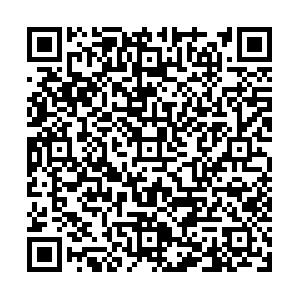Practice for the course of "community prevention and health care" in the teaching dialogue mode using problem-based learning
-
摘要:
目的 探讨基于PBL的对话教学模式在《社区预防与保健》课程中的教学效果,为基于PBL的对话教学模式的研究提供借鉴。 方法 于2019年9—12月采用随机数字表将牡丹江医学院2015级全科医学专业131名学生采用随机数字表法随机分为对照组(63人)和研究组(68人)。对照组采用传统的讲授式授课,研究组采用基于PBL的对话教学模式。课程结束后采用相同试卷考核且采用问卷调查评价教学效果、教学满意度、教学内容是否体现全科医学思维等。 结果 研究组的理论考试成绩、实践技能考试成绩和总成绩均高于对照组(均P<0.05);研究组对教学有助于培养全科医学思维与能力,培养临床预防服务的思维,增强临床筛检能力,以人群为基础的社区问题独立思考和分析处理能力,培养三级预防策略思维与能力,促进同学间的交流、沟通,增强团队合作等方面的评价优于对照组(均P < 0.05);研究组学生对教学方法的满意率为73.53%,对照组为53.97%,研究组对教学内容能体现全科医学思维的以健康为中心、群体为对象、个体群体兼顾的医疗,三级预防为导向的循证医疗,以家庭为单位的保健项目横向管理,慢性病管理的综合社区预防保健的评价优于对照组(均P < 0.05)。 结论 基于PBL的对话教学模式可以有效提高《社区预防与保健》课程的教学效果,激发全科学生了解基层卫生的兴趣,有利于学生全科医学思维与实践能力的培养。 Abstract:Objective To explore the teaching effect of the dialogue teaching model based on PBL in the course of Community Prevention and Health and provide a reference for the study of dialogue teaching model based on PBL. Methods A total of 131 students enrolled in the Department of General Medicine of Mudanjiang Medical College in 2015 were randomly divided into the control group (63 people) and the research group (68 people). The control group used traditional lecture-style teaching, and the research group used PBL-based dialogue teaching mode. After the course, the same test papers were used for assessment, and the questionnaires were used to evaluate the teaching effect, teaching satisfaction and the teaching content indicated the general medical thinking. Results The theoretical test scores, practical skill test scores and total scores of the research group were higher than those of the control group, and the differences were statistically significant (all P < 0.05). The research group was better than the control group in cultivating self-learning ability, improving learning enthusiasm and initiative ability, cultivating general medical and clinical preventive service thinking and ability, strengthening clinical screening ability, independent thinking and analysis of community problems based on the population, training three-level prevention strategy thinking and ability, promoting communication and communication amongst classmates and enhancing teamwork and other aspects (all P < 0.05). The satisfaction rate of the students in the research group with the teaching method was 73.53%, whereas that of the control group was 53.97%. The research group was better than the control group with health-centred, group-targeted, comprehensive community preventive health care evaluation of individual-group-oriented medical care, tertiary prevention-oriented evidence-based medical care, horizontal management of family-based health care projects and chronic disease management, and the difference was statistically significant (all P < 0.05). Conclusion The PBL-based dialogue teaching model can improve the teaching effect of the course of Community Prevention and Health, which may stimulate the interest of general students in understanding primary health, and promote the cultivation of multiple qualities and capabilities. The PBL-based dialogue teaching model is worthy of further research and promotion. -
表 1 2组学生的专业考核成绩比较(x ±s,分)
组别 人数 理论考试成绩 实践技能考试成绩 总成绩 对照组 63 71.50±8.58 24.50±6.50 75.61±12.65 研究组 68 89.50±7.49 27.50±7.80 91.34±9.88 t值 12.815 2.381 7.963 P值 < 0.001 0.018 < 0.001 表 2 研究组和对照组学生对教学效果的评价比较[人(%)]
组别 人数 培养自学能力,提高学习积极性、主动性能力 培养全科医学思维与理念能力 培养临床预防服务的思维 增强临床筛检能力 以人群为基础的社区问题独立思考和分析处理能力 培养三级预防策略的思维与能力 促进同学间的交流、沟通,增强团队合作 对照组 63 30(47.62) 28(44.44) 31(49.21) 29(46.03) 23(36.51) 28(44.44) 31(49.21) 研究组 68 40(58.82) 50(73.53) 50(73.53) 49(72.06) 54(79.41) 52(76.47) 46(67.65) χ2值 1.649 11.483 8.198 9.196 24.844 14.108 4.590 P值 0.199 0.001 0.004 0.002 < 0.001 < 0.001 0.032 表 3 研究组和对照组学生对教学满意度的评价比较
组别 人数 满意[人(%)] 比较满意[人(%)] 不满意[人(%)] 满意率(%) 对照组 63 15(23.81) 19(30.16) 29(46.03) 53.97(34/63) 研究组 68 28(41.18) 22(32.35) 18(26.47) 73.53(50/68)a 注:2组满意度比较,Z=2.542,P=0.011;与对照组比较,χ2=5.439,aP=0.020。 表 4 研究组和对照组学生对教学内容能否体现全科医学思维的评价比较[人(%)]
组别 人数 生物-心理-社会医学模式 以健康为中心、群体为对象、个体群体兼顾的医疗 三级预防为导向的循证医疗 以家庭为单位的保健项目横向管理 慢性病管理的综合社区预防保健 对照组 63 37(58.73) 35(55.56) 33(52.38) 37(58.73) 32(50.79) 研究组 68 42(61.76) 54(79.41) 48(70.59) 58(85.29) 48(70.59) χ2值 0.126 8.545 4.593 11.579 5.390 P值 0.723 0.003 0.032 0.001 0.020 -
[1] 冯先义, 刘语思, 程炼. 全科医疗照顾模式在社区多病共存患者中的应用[J]. 海南医学, 2017, 28(1): 161-162. doi: 10.3969/j.issn.1003-6350.2017.01.055 [2] 王博玉, 柏金秀, 安娜. PBL、CBL联合多媒体教学法在儿科见习教学中的应用[J]. 河北医药, 2018, 40(7): 1090-1093, 1098. https://www.cnki.com.cn/Article/CJFDTOTAL-HBYZ201807034.htm [3] 钱红, 刘理静, 胡柯, 等. CPC联合LBL教学法在全科医学概论课程中的应用效果评价[J]. 中华全科医学, 2019, 17(6): 1025-1028. https://www.cnki.com.cn/Article/CJFDTOTAL-SYQY201906038.htm [4] 高家林, 夏礼斌, 陆美琴, 等. PBL、CBL及LBL三法融合在内分泌科临床见习带教中的应用[J]. 中华全科医学, 2016, 14(7): 1220-1223. https://www.cnki.com.cn/Article/CJFDTOTAL-SYQY201607051.htm [5] 张海邻, 林立, 张维溪, 等. 基于TBL的CBL改良教学法在儿科学课堂教学中的实践和思考[J]. 中国高等医学教育, 2016(6): 108-109. doi: 10.3969/j.issn.1002-1701.2016.06.055 [6] 程先国. 核心素养的内涵和培养着力点[J]. 中国民族教育, 2016(4): 68-70. https://www.cnki.com.cn/Article/CJFDTOTAL-ZMZJ201604040.htm [7] 林心君, 张春霞, 陈锦团, 等. PBL结合CBL教学法在诊断学教学中的应用[J]. 广西中医药大学学报, 2017, 20(14): 81-83. https://www.cnki.com.cn/Article/CJFDTOTAL-ZDYX202005030.htm [8] 夏文华, 李亚南, 张丹凤. 基于主体间性的"教师学生文本"课堂教学共同体的构建: 以"中国近代史"课程为改革实践[J]. 文教资料, 2020(14): 168-170. https://www.cnki.com.cn/Article/CJFDTOTAL-WJZZ202014069.htm [9] 冯小萌, 王广. PBL联合CBL模式在临床见习中的应用[J]. 中国病案, 2016, 17(6): 83-85. https://www.cnki.com.cn/Article/CJFDTOTAL-ZGBN201606034.htm [10] 周雯. 中西结合全科医学专业学生中医经典课程教改的探索[J]. 中国中医药现代远程教育, 2018, 16(19): 37-39. https://www.cnki.com.cn/Article/CJFDTOTAL-ZZYY201819017.htm [11] 董朝. 浅谈我国全科医学教育模式及体会[J]. 世界最新医学信息文摘, 2020, 20(8): 297-298. https://d.wanfangdata.com.cn/periodical/sjzxyy-e202008164 [12] 邹林林, 肖雪. 全科医学本科毕业生就业现状与进展[J]. 临床医药文献电子杂志, 2017, 4(37): 7314-7315. doi: 10.3877/j.issn.2095-8242.2017.37.143 [13] 李雁平, 罗亮, 金凤娟, 等. 全科医师临床基本技能模拟训练与知识强化教育精准课程的探索与实践[J]. 中华全科医学, 2018, 16(8): 1379-1382. https://www.cnki.com.cn/Article/CJFDTOTAL-SYQY201808043.htm [14] 黄良玲. 对话教学模式在英语教学中的应用[J]. 现代交际, 2020(10): 194-195. https://www.cnki.com.cn/Article/CJFDTOTAL-XKJJ202010098.htm [15] 胡小磊, 陈卫东, 孙卫华, 等. PBL联合CBL教学法在内分泌科住院医师规范化培训教学中的应用[J]. 中华全科医学, 2017, 15(7): 1236-1238. https://www.cnki.com.cn/Article/CJFDTOTAL-SYQY201707045.htm [16] 汪道琼. 全科医学生参加社区个体化健康教育实践的方法与效果评价[J]. 中华全科医学, 2016, 14(9): 1574-1577. https://www.cnki.com.cn/Article/CJFDTOTAL-SYQY201609048.htm [17] 祝贺. 全科医生对社区卫生服务现状的思考[J]. 中国全科医学, 2016, 19(S1): 265-266. http://www.cnki.com.cn/Article/CJFDTotal-QKYX2016S1105.htm [18] FERRER T J, ANGEL M J R, ESTELLES J T, et al. Distance learning ects and flipped classroom in the anatomy learning comparative study of the use of augmented reality, video and notes[J]. BMC Med Educ, 2016, 16(1): 230-233. doi: 10.1186/s12909-016-0757-3 [19] 赵娜, 薛英利, 李乐. 健康中国视阈下叙事医学与全科医学的融合[J]中国医药导报, 2020, 17(22): 189-192. https://www.cnki.com.cn/Article/CJFDTOTAL-YYCY202022049.htm [20] 郭淑芳, 边红艳, 韩继明. 客观结构化临床考试在医学教育中应用的效果评价现状[J]. 中国高等医学教育, 2016(10): 91-92. https://www.cnki.com.cn/Article/CJFDTOTAL-ZOGU201610053.htm -

 点击查看大图
点击查看大图
计量
- 文章访问数: 299
- HTML全文浏览量: 131
- PDF下载量: 28
- 被引次数: 0



 下载:
下载: 